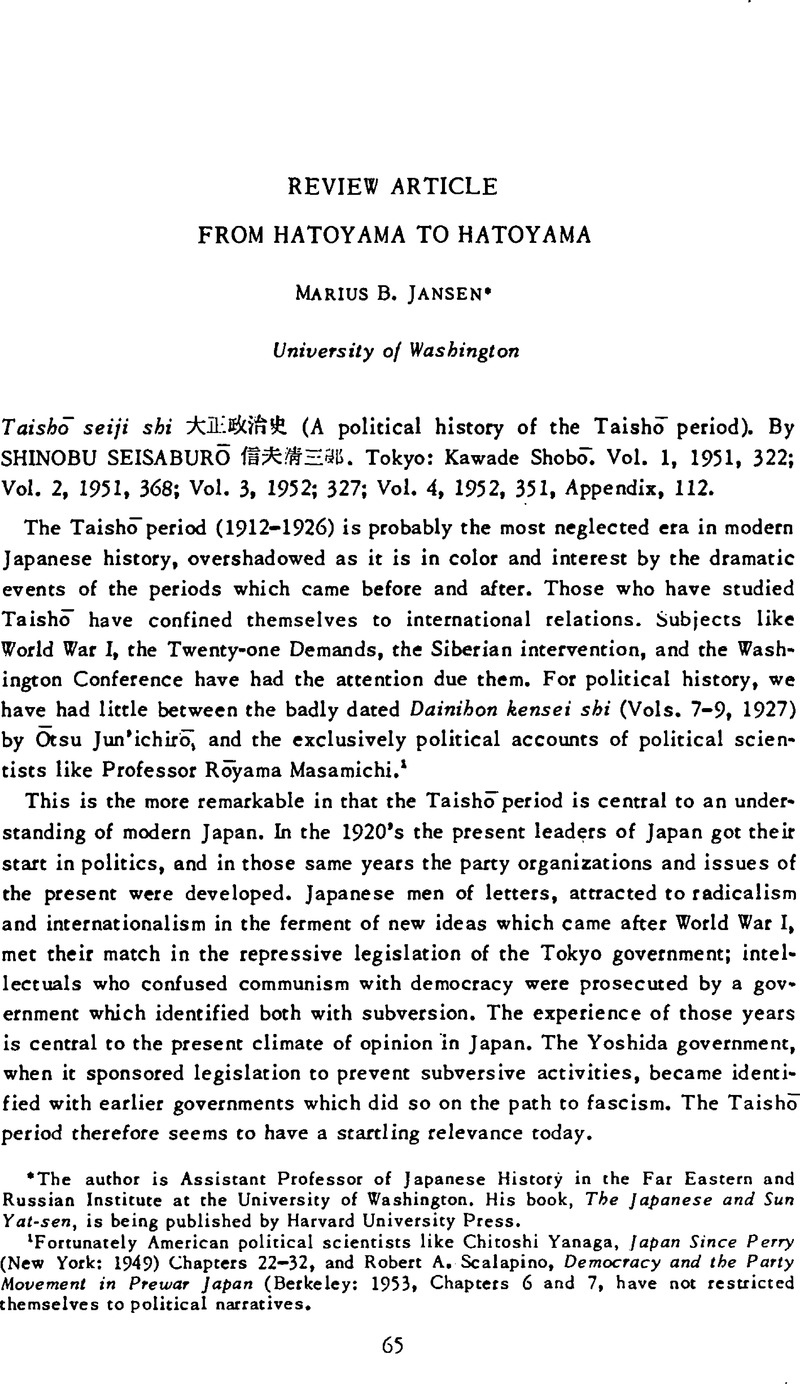No CrossRef data available.
Published online by Cambridge University Press: 23 March 2011

1 Fortunately American political scientists like Yanaga, Chitoshi, Japan Since Perry (New York: 1949)Google Scholar Chapters 22–32, and Scalapino, Robert A., Democracy and the Party Movement in Prewar Japan (Berkeley: 1953Google Scholar, Chapters 6 and 7, have not restricted themselves to political narratives.
2 For brief accounts of this controversy see: Ike, Noburaka, “The Development of Capitalism in Japan,” Pacific Affairs, 22 (06 1949), 185–190Google Scholar; Shigeki, Tōyama, Meiji ishin (Tokyo: 1951), 11–21Google Scholar; and Nihonshi kenkyū nyūnon (1949, 1951), 185–216.Google Scholar
3 Sei, Inoue, “Nihon no Sobietto kakumei kanshō sensō,” Rekishigaku kenkyū, No. 151 (05, 1951), No. 153 (09, 1951)Google Scholar; see also the section by the same author in Nihonshi kenkyū nyūnon, 217–305Google Scholar, for a discussion of Meiji historiography.
4 Nisshi sensō (The Sino-Japanese War), 1934Google Scholar; Mutsu gaikō (The Diplomacy of Mutsu), 1935Google Scholar; Gotō Shimpei, 1941Google Scholar; Kindai Nihon gaikō shi (Diplomatic history of Modern Japan), 1942Google Scholar; Kindai Nihon sangyō shi josetsu (Introduction to the history of manufacturing industry of modern Japan), 1942Google Scholar; Meiji seiji shi, 1950.Google Scholar
5 Marius B. Jansen, “Yawaca, Hanyehping, and the Twenty-one Demands,” Pacific Historical Review, 23. 1 (02 1954), 31–48.Google Scholar
6 Lenin, V. I., Selected Works (New York: 1943), 3:180–181Google Scholar, from “The Agrarian Programme of Social-Democracy in the First Russian Revolution, 1905–07,” written in 1907.
7 See the summary of press comment in the Japan Chronicle (Kobe), April 9, 1925, 460; The Osaka Asahi felt that the final bill was the work of “bigoted and ultraconservative people afraid of a sudden extension of suffrage,” and the Nichi-nichi was also unenthusiastic.